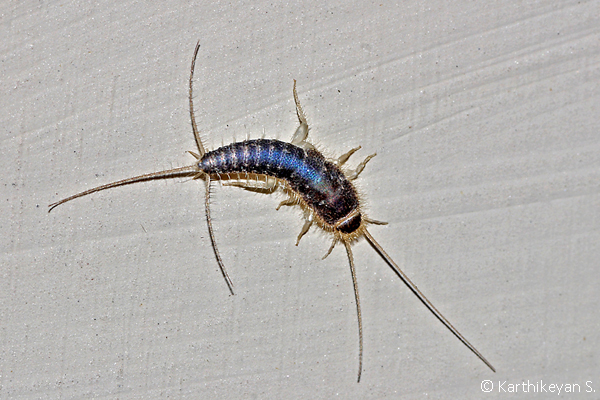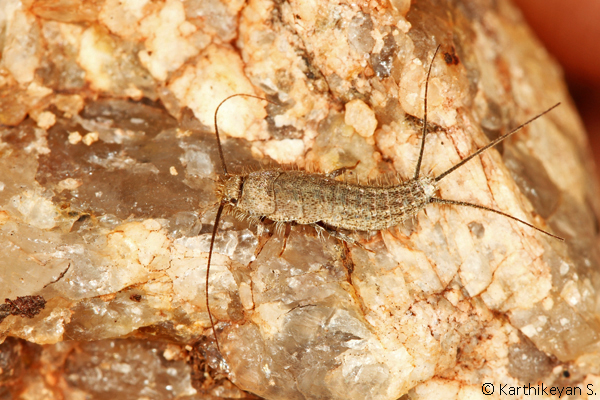THUD!!! The book is slapped shut. This is often the reaction that can be observed from many a bibliophage who has not already been introduced to the ‘bookworm’. The book had been hitherto sitting on the shelf for a long time, awaiting the attention of the owner.
But why? What triggered this reaction?
Once in a while, the odd book is picked up to be read before retiring for the day. A sudden appearance of a little critter scares one enough to react in this manner. The book is reopened with a lot of trepidation to check the result of this act, stemming from the fear of the unknown. Once the page has been located, the eye quickly scans the page. A hitherto non-existing blotch (read remains of the creature that was) on the page brings a smile to the face – the creature has been vanquished! The reading continues until one falls into slumber.
Before reacting so aggressively, do we even think as to what this little fellow was doing in a book, of all the places, I wonder. Perhaps never.
Well, the `bookworm’ that I am referring to here is a silverfish. Silverfish is a misnomer. It is not a fish as the name suggests, but a primitive insect, possibly the silvery colour of the body giving the silverfish its name. Silverfish, a wingless insect with long antennae, is nocturnal. The presence of 3 tails at the other end of its body is very characteristic.

But why a book? This question has bothered me for long.
The answer probably lies in the fact that silverfish thrive on a diet that is rich in carbohydrates. A quick look around the house will probably help us identify several items that match this criterion. Books, particularly old ones, find their way to the list easily. I say old books here also because, I remember distinctly the paste used in book binding that was made with maida (bleached wheat flour), a good source of carbohydrates. Paper too can add to their nutritional requirement. This perhaps explains the clean holes drilled through several pages of old books. And after all, before the invention of paper silverfish did survive by feeding on plant matter. To this day, in their natural environment, they can be seen under the bark of trees and amidst leaf litter feeding off matter available there.

In the natural world, many predators are also prey. Silverfish are devoured by earwigs and possibly tiny spiders too. They may also end up being food to other small creatures.
These primitive animals have a complicated ritual as part of their mating process with the female silverfish producing several whitish oval eggs at a time at the end of it. The nymphs are whitish in colour, and look like small adults. They shed their skin as they grow and become silvery adults.
The Silverfish is perhaps one among the ancient insects on Earth. They have been around even before the dinosaurs came into being! The experience of the various vagaries that Earth has gone through, has made the silverfish very resilient – they can survive without food for a whole year. Their lifespan itself lasts 3-6 years.
But then, that also brings us to the question: ‘What did the silverfish do before paper was invented and books were made?’ Even today, one can see silverfish often underneath the bark of trees and leaf litter where they toil away to decompose organic matter and help with recycling the nutrients. However, in our homes, one is likely to see a silverfish in the attic, near bookshelves, in closets or for that matter, wherever it can find food and preferably humidity. In fact, if you encounter the silverfish often, it may be an indication for you to check your home for issues that may stem from high moisture.
Now, as a mark of respect would we want to revisit ‘that’ page to see the remains of the ancient critter – which was only trying to recycle the books that we had left to gather dust?!?!